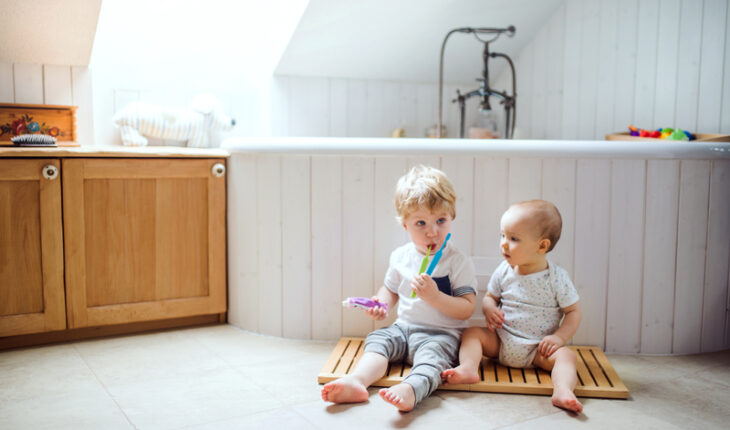The safety of children is a paramount concern in any household. Unbeknownst to many, several everyday items within the home can pose significant risks to young ones.
Cleaning Products
Cleaning products, often stored under sinks or in easily accessible cabinets, pose a considerable danger to children. The bright colors and interesting shapes of these containers can be particularly enticing to young explorers. These products contain chemicals that can be harmful if ingested, inhaled, or even touched. Cleaning products are among the leading causes of accidental poisoning in children under six. The risks are not just limited to ingestion. Aerosol sprays, for instance, can irritate the lungs, potentially causing breathing difficulties in young children. To mitigate these risks, it’s crucial to store cleaning products in high or locked cabinets, far out of reach of curious hands. Opting for natural or non-toxic cleaning alternatives can reduce the risk of accidental poisoning.
Cords and Cables
Another common household hazard comes in the form of cords and cables. These seemingly harmless items can present a strangulation risk for young children. Babies and toddlers, who are naturally curious and have a limited understanding of danger, can easily become entangled in cords from blinds, electrical appliances, or chargers. Cordless options are a safer option for households with kids. For instance, cordless window treatments eliminate the risk of strangulation posed by traditional blinds and curtain cords. If cordless alternatives are not feasible, ensuring that cords are secured and kept out of reach can significantly reduce risks. Educating children about the dangers of playing with cords and cables is crucial as they grow and become more mobile.
Small Objects
The danger posed by small objects in the household cannot be overstated. Items like batteries, magnets, coins, and small toys can be choking hazards for children. The size and shape of these objects make them easy to swallow but difficult to dislodge once they’re stuck in a child’s throat. Choking is a leading cause of injury among children, especially those under four years old. To prevent such accidents, it’s important to keep small objects out of reach and to supervise children when they’re playing with toys that contain small parts. Regularly checking the floor and low-lying areas for potential hazards can also help prevent accidental ingestion. Apart from these common household items, there are many other potential dangers lurking within our homes. It’s important to be aware of these hazards and take necessary precautions to keep children safe. Regularly child-proofing your home and educating children about potential dangers can go a long way in preventing accidents and ensuring a safe environment for children to grow and thrive.
Childproofing the home and educating both parents and children about these risks is essential in creating a safe and nurturing space for the youngest members of our society. Through awareness and precaution, we can significantly reduce the risks posed by common household items, ensuring a safer environment for children to grow and thrive.
Did You Enjoy Reading This Article? Here’s More to Read: How to Connect With Your Newborn




